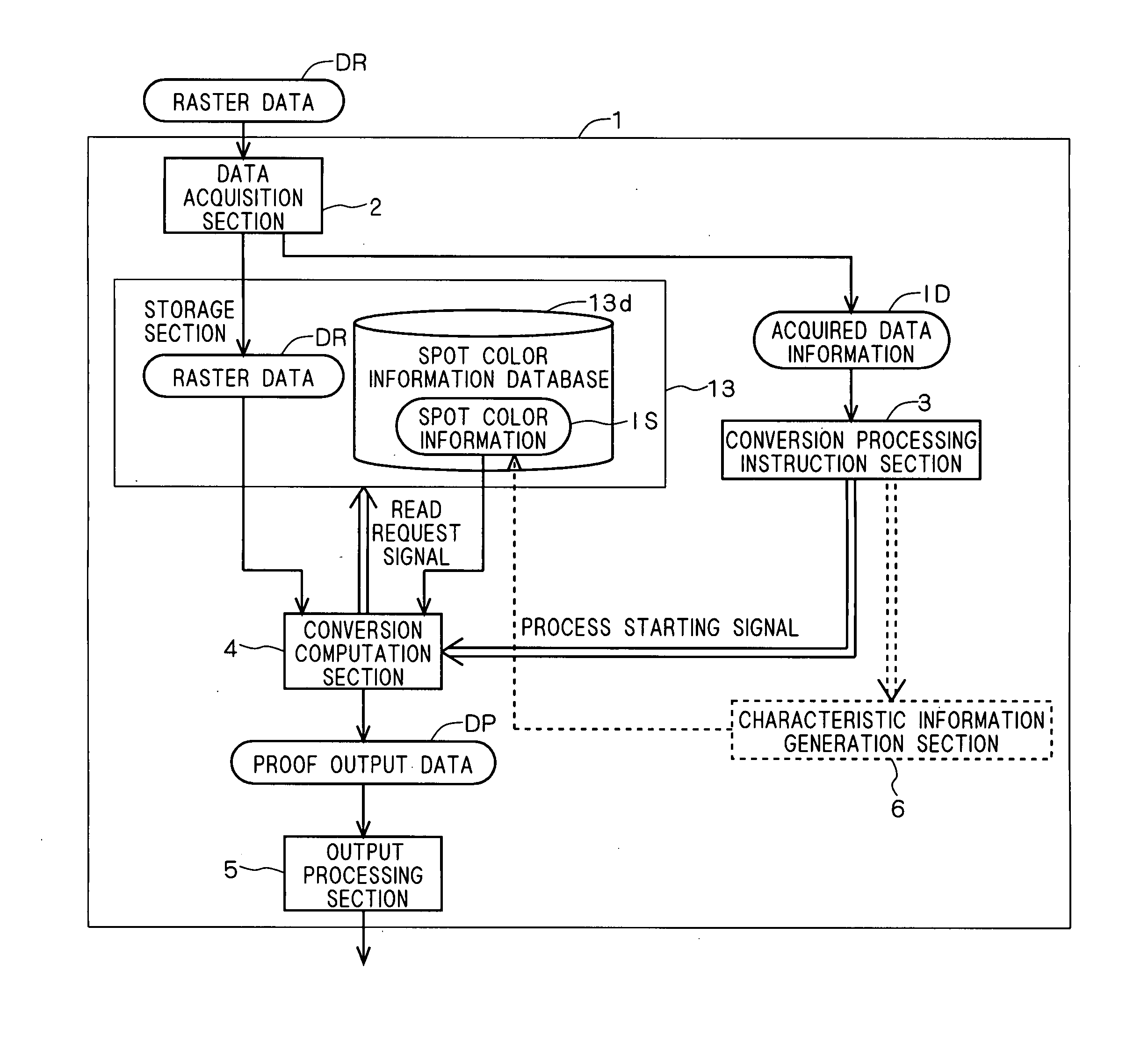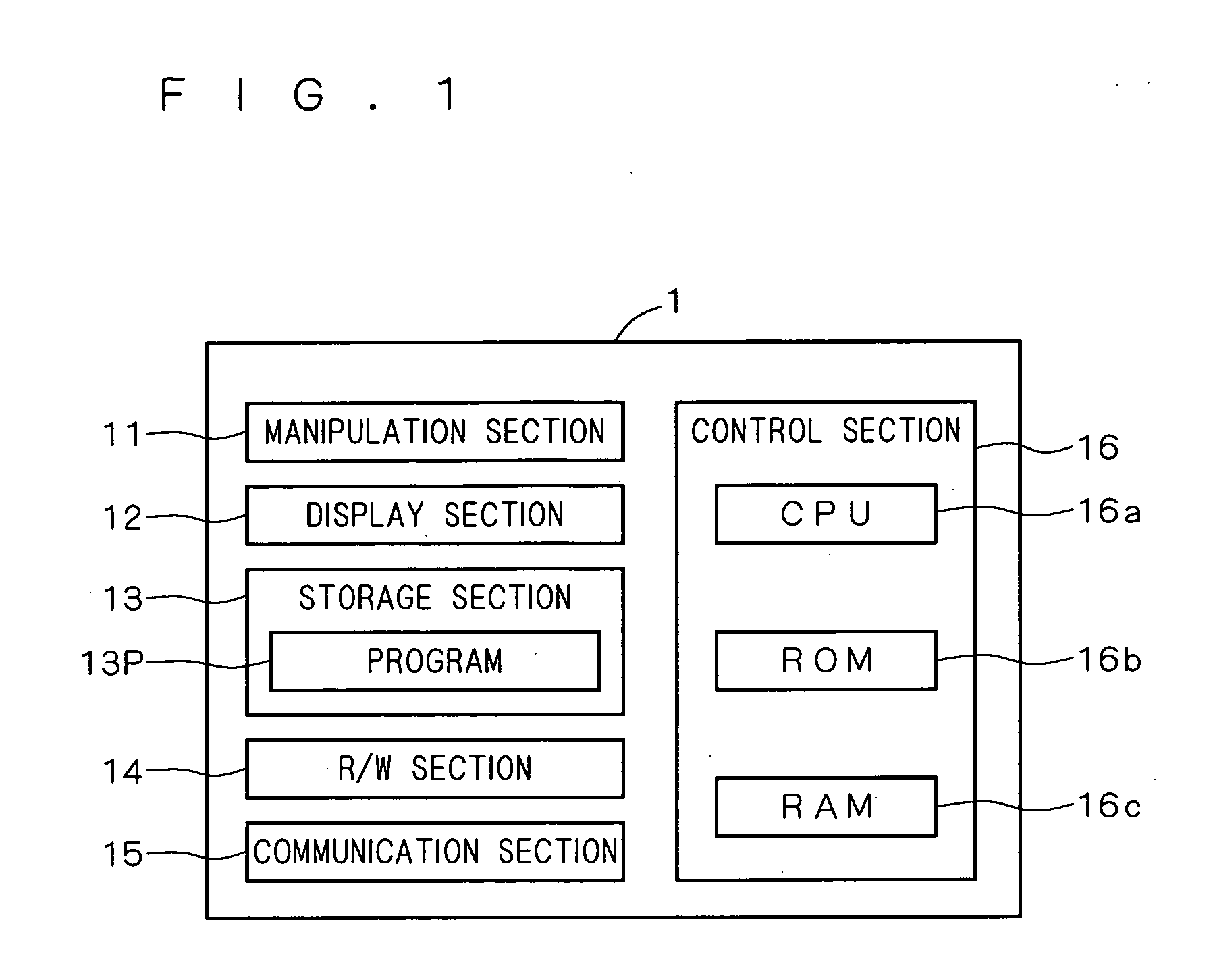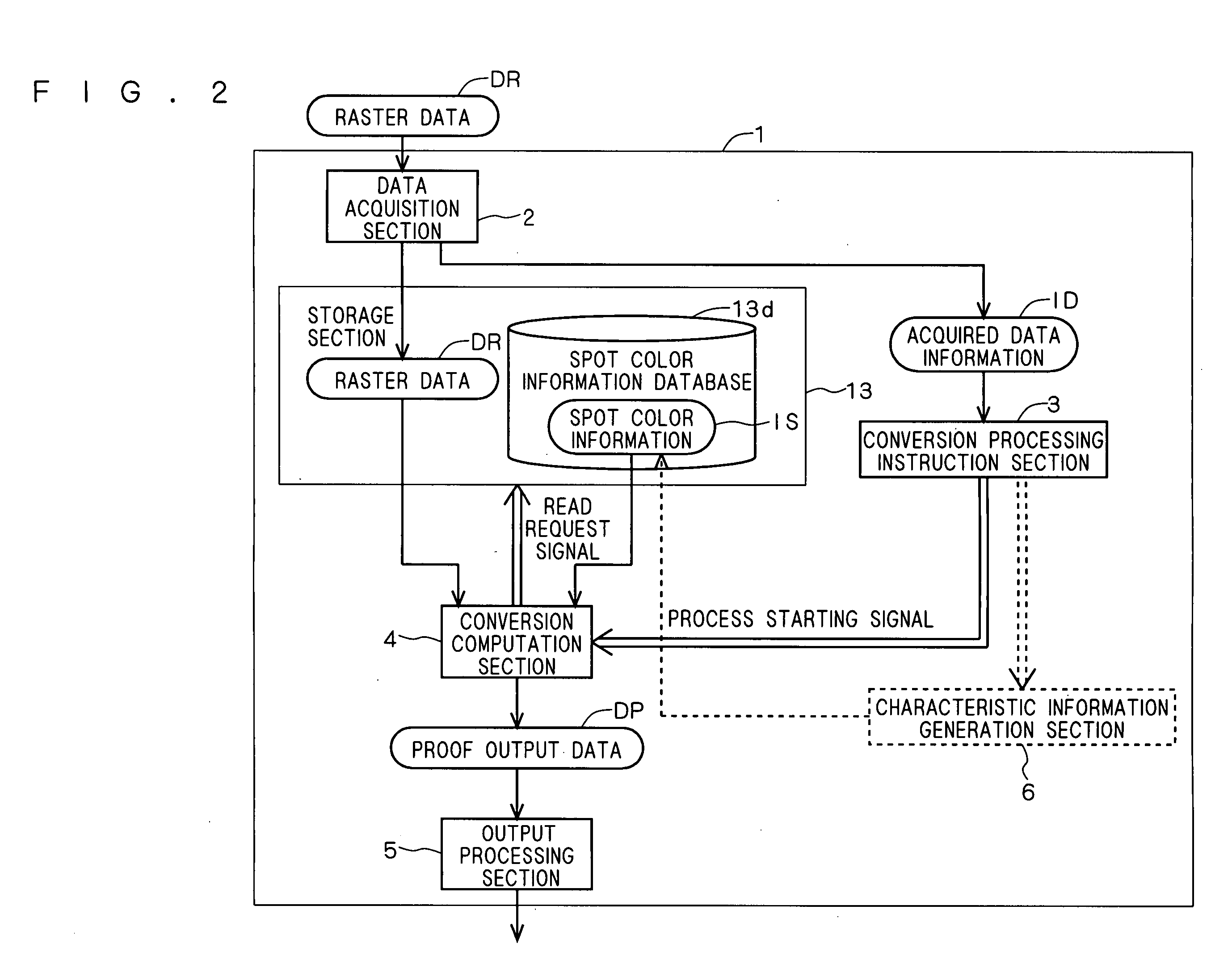Method of converting image data, image data conversion apparatus and program
- Summary
- Abstract
- Description
- Claims
- Application Information
AI Technical Summary
Benefits of technology
Problems solved by technology
Method used
Image
Examples
first preferred embodiment
[0033]
[0034]FIG. 1 is a schematic diagram showing the construction of an image data conversion apparatus 1 according to a first preferred embodiment of the present invention. The image data conversion apparatus 1 is an apparatus implemented, for example, by a computer. The image data conversion apparatus 1 executes a predetermined program 13p thereby to convert bitmap-format printing image data (e.g., raster data obtained by a rasterization process) color-designated on a pixel-by-pixel basis for a plurality of color components including a spot color into bitmap-format image data which does not include the spot color.
[0035] The image data conversion apparatus 1 can be used in any stage of printing workflow if there arises a need for the above-mentioned image data conversion. It is not necessary that a single computer is configured to have only the function of the image data conversion apparatus 1, but the single computer may be configured to implement a different function by the exe...
second preferred embodiment
[0079] The first preferred embodiment illustrates the conversion computation for the pseudocolorization of a single spot color in the case of the overprinting using a spot color plate for the single spot color and a process plate. A second preferred embodiment of the present invention will illustrate a conversion computation for the pseudocolorization of two different spot colors in the case of the overprinting of the two different spot colors. There arises a need for such a conversion computation when producing proof output having an overprint using only the spot colors by means of a proof output apparatus capable of representing only the process colors. In such a case, a conversion computation expression for the color conversion process can be derived by discussion similar to that of the first preferred embodiment. The operations of the sections of the image data conversion apparatus 1 in the second preferred embodiment are basically similar to those in the first preferred embodim...
PUM
 Login to View More
Login to View More Abstract
Description
Claims
Application Information
 Login to View More
Login to View More - R&D Engineer
- R&D Manager
- IP Professional
- Industry Leading Data Capabilities
- Powerful AI technology
- Patent DNA Extraction
Browse by: Latest US Patents, China's latest patents, Technical Efficacy Thesaurus, Application Domain, Technology Topic, Popular Technical Reports.
© 2024 PatSnap. All rights reserved.Legal|Privacy policy|Modern Slavery Act Transparency Statement|Sitemap|About US| Contact US: help@patsnap.com










